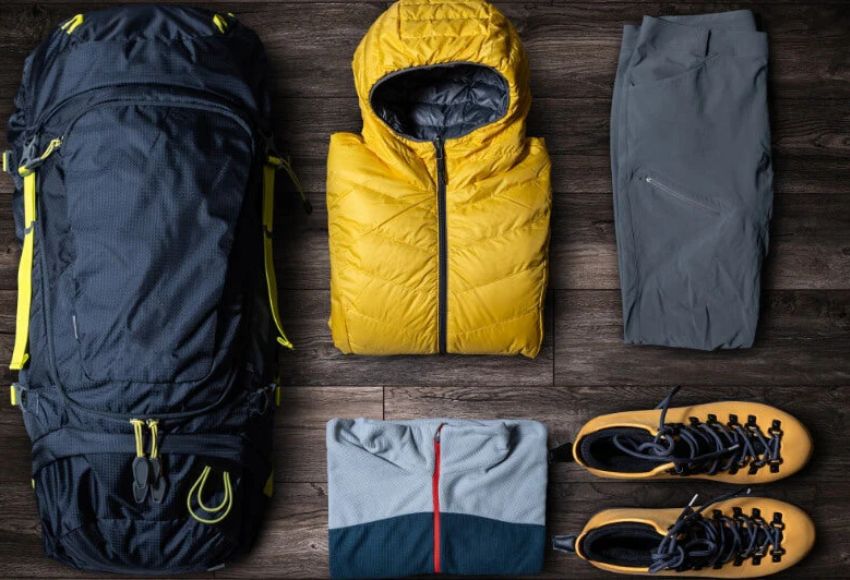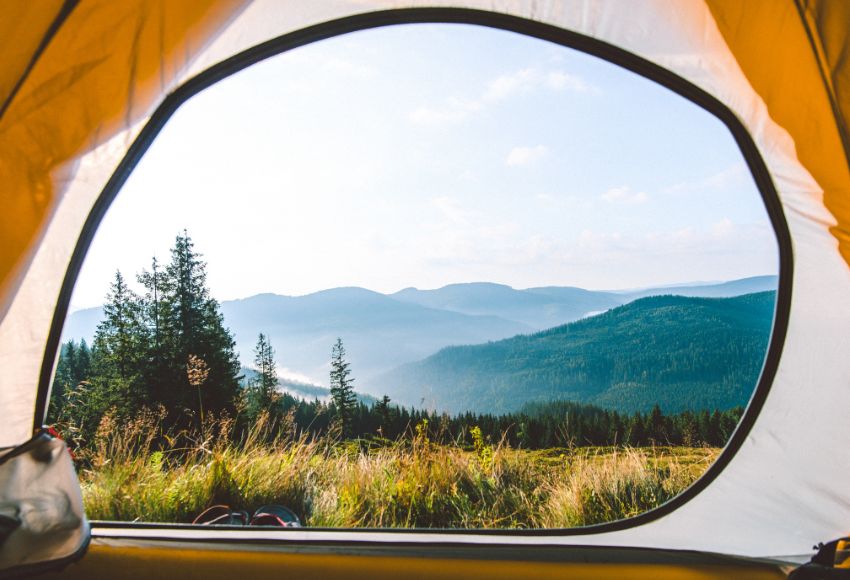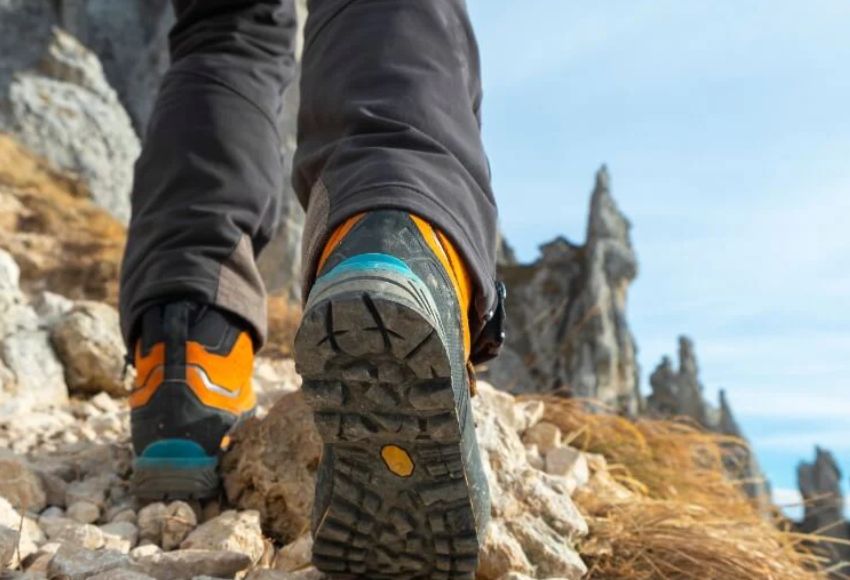...or how to shed pounds from your backpack without losing your mind (or your sleeping bag)
“Do I really have everything?” most of us ask ourselves before setting off on a hike. And after the first three kilometers, the second question comes: “Why am I dragging all this?”
Less stuff, more experiences
The ultralight approach isn't just about lightening your backpack. It's a whole philosophy that teaches you minimalism, thoughtfulness, and efficiency - whether you're heading to the Jeseníky Mountains for a weekend or planning to cross the Alps.
Let's break this philosophy down to the last gram.
What does "ultralight" mean?
Ultralight (abbreviated as UL) is a style of outdoor equipment and approach to expeditions that aims to minimize weight and volume without fundamentally compromising safety and comfort.
An ultralight backpack is usually considered to be one with a base weight (without food and water) of under 5 kg .
It's not about suffering - it's about moving further, faster, more freely.
What is base weight and how to calculate it?
- Base weight = all equipment except water, food and fuel.
- Total pack weight = total weight including water and food.
- Skin-out weight = everything you have with you (backpack + pockets + what you are wearing).
Goal: reduce base weight → greater flexibility, less fatigue, higher pace.
Who is the ultralight approach suitable for?
- For long-distance pilgrims and trekkers who walk for several days at a time .
- For those who don't have a strong physique but want to keep walking .
- For anyone who appreciates more comfortable movement in the field .
It's not for everyone – and you don't have to be an extremist. Ultralight can be adapted to any travel style.

5 main principles of the ultralight approach
1. Reduce quantity – remove unnecessary things
Every extra gram counts. Do you really need four socks for a two-day trip?
Ask about each thing:
- Will I really use it every day?
- Can it be replaced by something else?
-
Could I survive without it?
2. Minimize weight – choose lighter alternatives
Today, there are super-light yet reliable equipment options. It's not always necessary to carry the classics from the army warehouse.
E.g.:
- Tent → light tarp or poncho-tarp
- Camping chair → sleeping pad folded as support
- Gas stove → alcohol stove or cold kitchen
- Heavy stainless steel bottle → PET bottle or hydration bag (soft flask)
- Large first aid kit → minimalist first aid kit + basic medicines
- Classic headlamp with batteries → mini USB headlamp (e.g. Nitecore NU25)
- Microfiber towel → small napkin made of quick-drying fabric (cut)
3. Multifunctionality – one thing, multiple uses
Each object should ideally serve more than one purpose.
E.g.:
- Poncho → also works as a tarp (sleeping shelter)
- Scarf (buff / merino tunnel) → hat, towel, filter, pillow, bandage
- Trekking poles → support when walking, but also a structure for a tarp or shelter
- Sleeping bag cover → pillow after filling with clothes
4. Modularity – pack according to the situation
Assemble your equipment in a way that can be easily adapted to the type of expedition – one way you'll pack for a summer crossing of the Beskydy Mountains, another for a winter hike in the Alps. Adapt your equipment to the terrain, season, and duration of the event.
E.g.:
Cooking
- Summer weekend in the Beskydy Mountains: cold dishes, instant food
- Winter expedition: gas stove + leeward
Sleep
- Summer: light quilt + tarp
- Spring/autumn: sleeping bag with better insulation + closed shelter
Clothing
- Spring/summer: light layers, minimal insulation
- Winter: down jacket, thick socks, gloves, backup layer
Water filtration
- Area with frequent sources: E.g. Sawyer Mini water filter
- High-altitude terrain without reliable sources: carrying a larger supply of water
Charging
- Short trip: 5000 mAh power bank
- Long trek: 10,000 mAh + possibly solar panel
5. Safety and common sense always come first
Never reduce weight at the expense of basic safety.
Having one kilo less in your backpack isn't worth it if you don't have dry items, first aid, or storm protection.
Examples of when saving is not worth it:
- Minimalist first aid kit without bandages: a few grams less, but you won't help yourself in case of injury
- Check the weather carefully, especially if you're going for multiple days. If any of them are going to be awful, it's not worth saving on accommodation.
- Thin tarp without leeward in a storm: great weight, but there is a real risk of getting wet
- No headlamp – “I’ll be asleep by dusk” – but what if you’re delayed by the journey? It’s a good idea to always have a mini headlamp with you if you’re going on a more demanding day hike.
When to stick to a safe base:
- In unpredictable weather (mountains, winter, spring)
- When you go a long way outside of civilization
- On solo expeditions (without the possibility of relying on help)
- If you have no experience with expeditions in the given terrain

Tip: Always have a plan B – what will you do if you get wet, get lost, or get injured? Ultralight gear won’t give you wings – but good judgment will save your trip.
Overview of basic UL equipment
|
Category |
Ultralight variant |
Weight (approximate) |
|
Backpack |
frameless, 35–45 l |
400–800g |
|
Shelter |
tarp, poncho-tarp |
300–600g |
|
Sleeping bag/Quilt |
feathers, synthetics |
500–800g |
|
Sleeping mat |
foam / inflatable UL |
250–500g |
|
Cooking |
alcohol cooker / cold kitchen |
150–300g |
|
Clothing |
layering, merino, pertex |
minimalistically |
|
Water filtration |
Sawyer Mini, Katadyn BeFree |
~50–100g |
|
First aid kit + KPZ |
own report |
~150–300g |
How to start ultralighting step by step
1. Review what you already have
- To weigh every thing on the scale.
- Make a list of equipment (e.g. in the Lighterpack or Notion app).
- Find out what you don't use - and consider whether you're just carrying it "just in case."
2. Start with clothes and a sleeping bag
- Clothing often accounts for a large portion of weight.
- A sleeping bag and sleeping pad are heavy items – but they can be optimized a lot.
3. Focus on the “Big Three”
- Backpack, sleeping bag, shelter. This often makes up 50–70% of the base weight.
4. Test, test, test
- Go on a short trip with new equipment.
- Keep track of what you missed and what you didn't pull out at all.
-
Tune the configuration based on your own experience.
Ultralight myths vs. reality
|
Myth |
Reality |
|
"Ultralight means discomfort." |
On the contrary - lightening the backpack often increases the comfort of movement. |
|
"I need to buy expensive equipment." |
A lot of things can be DIYed or alternatives can be used. |
|
"It's not safe." |
If you know what you're doing, it can be safer than a heavy backpack that will exhaust you. |
When does it make sense to go to UL and when is it better not to?
Ultralight we recommend:
- For long-distance treks and long crossings
- If you have a good weather forecast
- When you know where to refill your water and food
Ultralight is NOT RECOMMENDED (or only partially):
- In winter conditions without experience
- If you are carrying equipment for other people (e.g. children)
- When you go outside civilization with no way to replenish
Basic UL setup for a beginner (base weight ~6 kg):
|
Category |
Recommended solution |
|
Backpack |
frameless UL backpack 40 l (e.g. Decathlon MT500 UL) |
|
Shelter |
poncho-tarp or light tent for one |
|
Sleeping bag |
3-season synthetics (comfort around 5–10 °C) |
|
Sleeping mat |
Z-lite foam sleeping pad (can be cut to size) |
|
Cooking |
alcohol stove + titanium bowl (or cold kitchen) |
|
Water |
2 PET bottles 1 l + Sawyer Mini |
|
Clothing |
1 extra set (t-shirt, socks, underwear) + insulation |
|
First aid kit + KPZ |
minimalist, tailored to the trip |
Total price: approx. 6–8 thousand CZK (combination of new + second-hand equipment)

Tips for additional equipment and upgrades
- Sleeping bag cover – replace with a compression drysack
- Ešus – can be a mug and a bowl in one
- Spoon – long plastic (Titanium is cool, but an unnecessary luxury)
- Knife – an ultra-light Victorinox Classic (~21 g) is enough
Recommended resources and inspiration
- YouTube channels: Darwin onthetrail, Homemade Wanderlust, Zpacks
- Websites: LighterPack, Outdoorline, HikeVentures
- Communities: Reddit /r/Ultralight, Facebook groups like "Ultralight CZ/SK"
- Apps: Adventurer, MapyCZ
Conclusion: It's not a competition, it's a journey
Ultralight isn't about how much weight you carry. It's about how much junk you're willing to leave at home so you can keep going. It's a way to enjoy your trips with more ease - physically and mentally.
Don't start by throwing away half your gear. Start by noticing what you really need. And you'll find that the less stuff weighing you down, the more space you have for experiences.
[/lock]

Pokračování článku je dostupné jen pro předplatitele
Adventure Clubu - jak členství získat se dočteš níže.
Článek si odemkneš zadáním svého přístupového kódu,
který získáš po aktivaci Adventurer Clubu.





Leave a comment
All comments are moderated before being published.
This site is protected by hCaptcha and the hCaptcha Privacy Policy and Terms of Service apply.